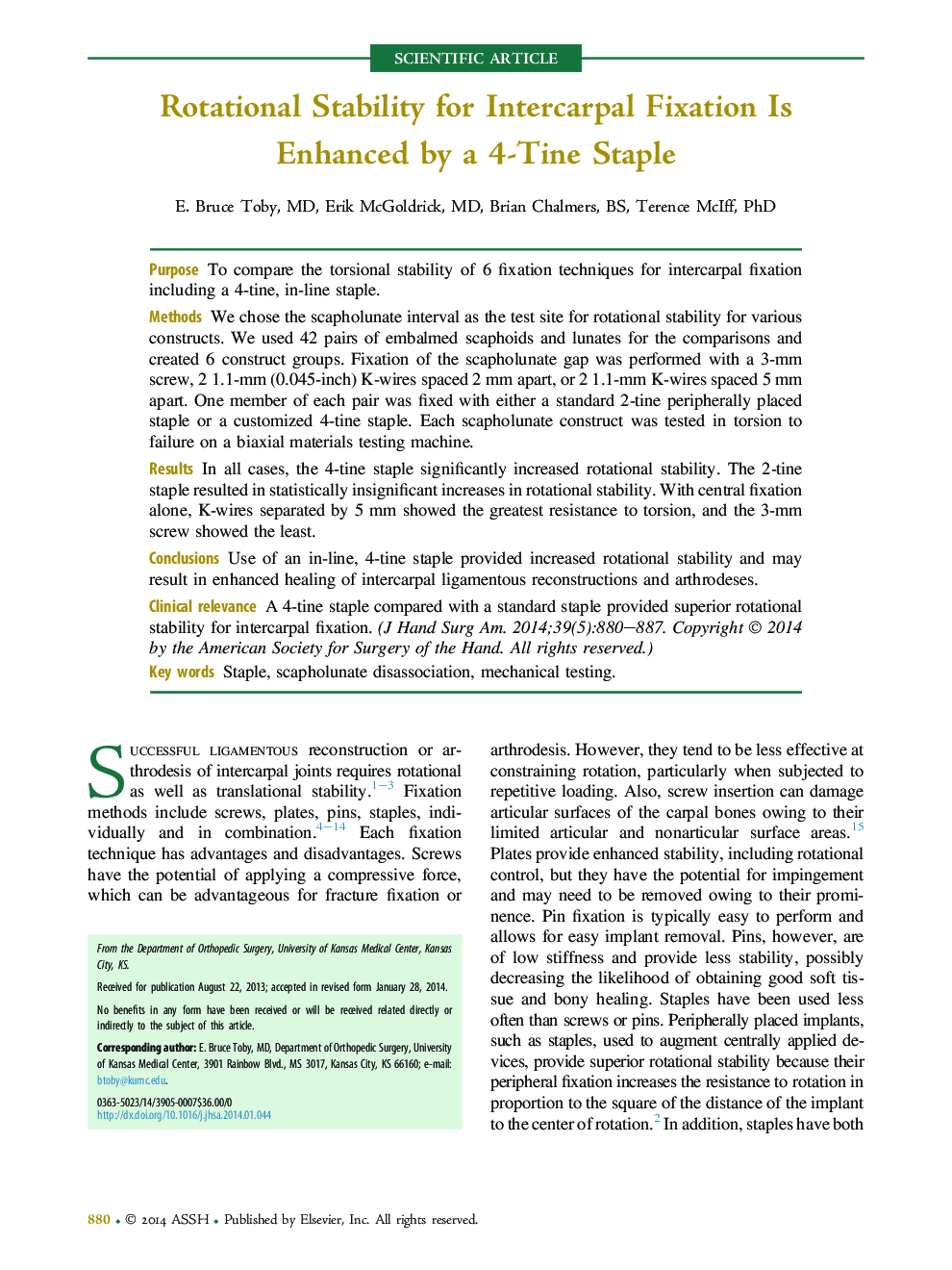| Article ID | Journal | Published Year | Pages | File Type |
|---|---|---|---|---|
| 4067341 | The Journal of Hand Surgery | 2014 | 8 Pages |
PurposeTo compare the torsional stability of 6 fixation techniques for intercarpal fixation including a 4-tine, in-line staple.MethodsWe chose the scapholunate interval as the test site for rotational stability for various constructs. We used 42 pairs of embalmed scaphoids and lunates for the comparisons and created 6 construct groups. Fixation of the scapholunate gap was performed with a 3-mm screw, 2 1.1-mm (0.045-inch) K-wires spaced 2 mm apart, or 2 1.1-mm K-wires spaced 5 mm apart. One member of each pair was fixed with either a standard 2-tine peripherally placed staple or a customized 4-tine staple. Each scapholunate construct was tested in torsion to failure on a biaxial materials testing machine.ResultsIn all cases, the 4-tine staple significantly increased rotational stability. The 2-tine staple resulted in statistically insignificant increases in rotational stability. With central fixation alone, K-wires separated by 5 mm showed the greatest resistance to torsion, and the 3-mm screw showed the least.ConclusionsUse of an in-line, 4-tine staple provided increased rotational stability and may result in enhanced healing of intercarpal ligamentous reconstructions and arthrodeses.Clinical relevanceA 4-tine staple compared with a standard staple provided superior rotational stability for intercarpal fixation.
